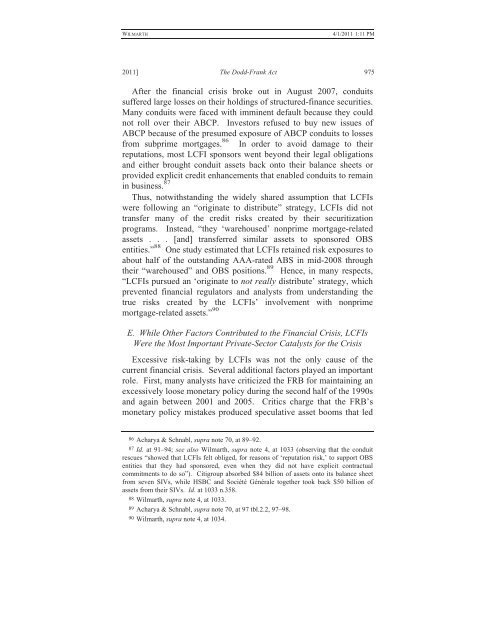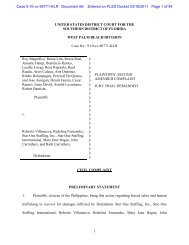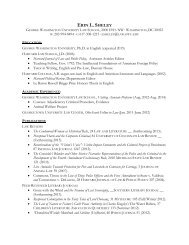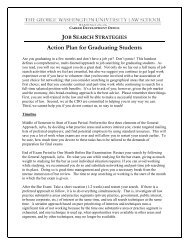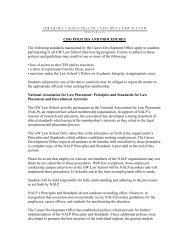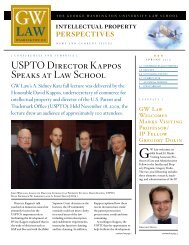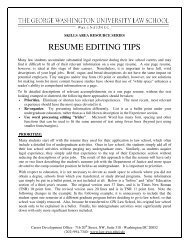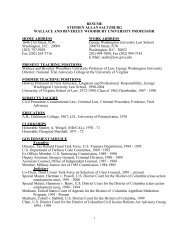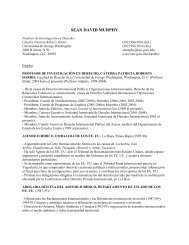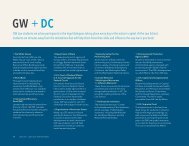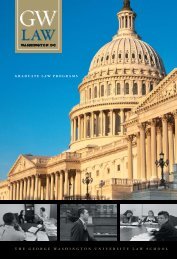CLE Materials for Panel #1 - George Washington University Law ...
CLE Materials for Panel #1 - George Washington University Law ...
CLE Materials for Panel #1 - George Washington University Law ...
You also want an ePaper? Increase the reach of your titles
YUMPU automatically turns print PDFs into web optimized ePapers that Google loves.
WILMARTH<br />
4/1/2011 1:11 PM<br />
2011] The Dodd-Frank Act 975<br />
After the financial crisis broke out in August 2007, conduits<br />
suffered large losses on their holdings of structured-finance securities.<br />
Many conduits were faced with imminent default because they could<br />
not roll over their ABCP. Investors refused to buy new issues of<br />
ABCP because of the presumed exposure of ABCP conduits to losses<br />
from subprime mortgages. 86 In order to avoid damage to their<br />
reputations, most LCFI sponsors went beyond their legal obligations<br />
and either brought conduit assets back onto their balance sheets or<br />
provided explicit credit enhancements that enabled conduits to remain<br />
in business. 87<br />
Thus, notwithstanding the widely shared assumption that LCFIs<br />
were following an “originate to distribute” strategy, LCFIs did not<br />
transfer many of the credit risks created by their securitization<br />
programs. Instead, “they ‘warehoused’ nonprime mortgage-related<br />
assets . . . [and] transferred similar assets to sponsored OBS<br />
entities.” 88 One study estimated that LCFIs retained risk exposures to<br />
about half of the outstanding AAA-rated ABS in mid-2008 through<br />
their “warehoused” and OBS positions. 89 Hence, in many respects,<br />
“LCFIs pursued an ‘originate to not really distribute’ strategy, which<br />
prevented financial regulators and analysts from understanding the<br />
true risks created by the LCFIs’ involvement with nonprime<br />
mortgage-related assets.” 90<br />
E. While Other Factors Contributed to the Financial Crisis, LCFIs<br />
Were the Most Important Private-Sector Catalysts <strong>for</strong> the Crisis<br />
Excessive risk-taking by LCFIs was not the only cause of the<br />
current financial crisis. Several additional factors played an important<br />
role. First, many analysts have criticized the FRB <strong>for</strong> maintaining an<br />
excessively loose monetary policy during the second half of the 1990s<br />
and again between 2001 and 2005. Critics charge that the FRB’s<br />
monetary policy mistakes produced speculative asset booms that led<br />
86 Acharya & Schnabl, supra note 70, at 89–92.<br />
87 Id. at 91–94; see also Wilmarth, supra note 4, at 1033 (observing that the conduit<br />
rescues “showed that LCFIs felt obliged, <strong>for</strong> reasons of ‘reputation risk,’ to support OBS<br />
entities that they had sponsored, even when they did not have explicit contractual<br />
commitments to do so”). Citigroup absorbed $84 billion of assets onto its balance sheet<br />
from seven SIVs, while HSBC and Société Générale together took back $50 billion of<br />
assets from their SIVs. Id. at 1033 n.358.<br />
88 Wilmarth, supra note 4, at 1033.<br />
89 Acharya & Schnabl, supra note 70, at 97 tbl.2.2, 97–98.<br />
90 Wilmarth, supra note 4, at 1034.


